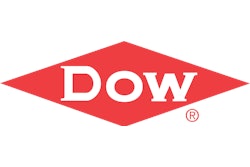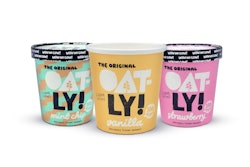While a recent press release from the Association of Plastic Recyclers (APR) and the American Chemistry Council proclaims, “Plastic Bottle Recycling Strong Despite Challenges,” a 28.9% recycling rate for PET and high-density polyethylene bottles in 2018 lags far behind the rates recorded in Europe—and far behind the rates that will be needed to fulfill the numerous commitments made by Consumer Packaged Goods companies to use more recycled content in their packaging by 2025.
According to “The 29th annual National Postconsumer Plastic Bottle Recycling Report,” the domestic collection of plastic bottles for recycling rose 52 million pounds, or 1.8%, to reach nearly 2.9 billion pounds in 2018. At the same time, there was little change in the overall recycling rate for plastic bottles, with a slight decline of 0.4% from the prior year.
In 2017, plastic bottle recycling declined slightly, slipping 3.6% to 2.8 billion lb. Overall, the recycling rate for plastic bottles for the year was 29.3%, down 0.4% from 29.7% in 2016. (See article from Packaging World: "Report: Plastic Bottle Recycling Declines Slightly in 2017").
Compare those numbers with the results of a study released in mid-2019 by ICIS (Independent Commodity Intelligence Services) around the collection, recycling, and end use of PET in Europe. It shows that the PET bottle collection rate in Western Europe rose from 58% in 2016 to 63% in 2018 and is projected to reach 65% in 2019.
Notes an article in Recycling magazine, “According to ICIS The top seven highest collection rates in 2018 were found in countries with a deposit return scheme (DRS) in place for PET bottle collection, perhaps evidence that such systems are what is needed to produce the outcomes required in terms of quantity and quality improvements. Regulation is seen as the most effective way to drive investment in recycling—but agreeing who pays within the supply chain is an argument that will run for some time.”
However, despite these robust recycling numbers, the article reports that, “Under the SUP [Single-Use Plastics] Directive, the industry is required to reach recovery rates of 77% by 2025 and 90% by 2029, but the collection volume growth rate is currently falling. ICIS estimates that the volume of collected material will need to increase by 7% per annum if the 2029 target is to be met.”
The challenge is even greater in the U.S. In an article from Plastics News, IHS Markit analyst Tison Keel is quoted as saying, “U.S. [recycled PET] collection rates are among the lowest in the world. They’ve been stuck in the high 20s [in percentage rates].There’s also [recycled PET] demand for fiber in carpet. There’s not enough collected to fill all needs.”
Keel adds that U.S. recycling rates would need to be more than double their current levels to meet consumer brand objectives, and “it’s hard to reach that target by 2025.”
In the ACC/APR press release, Steve Russell, Vice President of ACC’s Plastics Division, comments on the need for more recycled materials: “Brand owners have made public commitments to use significantly more recycled content in their products and packages in the months ahead. And manufacturers across the value chain are creating more circular business models for using—and reusing—plastics. It is therefore increasingly important to get as much of the right plastics into the recycling bin as possible.”
In an article in Packaging World magazine (see "PepsiCo Accelerates Plastic Waste Reduction Efforts"), Roberta Barbieri, Vice President Global Sustainability, PepsiCo, concurred on the need to boost recycling rates to meet PepsiCo’s commitments. Through its Performance with Purpose corporate social responsibility strategy, PepsiCo has committed to design 100% of its packaging to be recyclable, compostable, or biodegradable, use 25% recycled content in its plastic packaging (see "PepsiCo expands sustainable packaging vision"), reduce packaging’s carbon impact, and reduce the use of virgin plastics for its beverage brands by 35% through the increased adoption of recycled content and alternative packaging—all by 2025.
Noted Barbieri in the article, “There simply isn’t enough recycled content in the supply chain today to enable us to reach our goals, and the only way to make more is to drive higher recycling rates. This is why we are investing to boost recycling rates and have also formed new partnerships to help develop enhanced recycling technologies.
Because higher recycling rates mean a greater supply of recycled plastic, we are investing in recycling infrastructure and consumer education with key partners, and we have joined a range of partners to help build new systems that we believe will make plastics use more sustainable.”
Other figures from the report show that the overwhelming majority of plastic bottles collected for recycling is processed domestically, as exports of post-consumer plastic bottles declined. In 2018, 90% of total plastic bottles collected for recycling in the U.S. were processed domestically. Less than 8% of PET bottles and less than 14% of HDPE bottles collected domestically were processed outside of the country, with less than half of exports leaving North America. Domestic capacity utilization for both PET and HDPE rose in 2018, and PET reclaimer plant capacity utilization rose to 80%, with HDPE climbing to 73%.
Says Steve Alexander, President of APR, “Plastics recycling is a vibrant, resilient industry that continues to remain strong in a challenging environment. Despite the reduction in export markets, demand for quality recycled material remains robust, and many recyclers are investing in updating and expanding our domestic infrastructure to meet that demand.”
The report also shows that per capita consumption of plastic bottles has been steady for the past six years. Together, PET and HDPE bottles make up 97.1% of the U.S. market for plastic bottles with polypropylene comprising 1.8%, low-density polyethylene 0.7%, and polyvinyl chloride 0.3%. Together, PET and HDPE comprise 98.9% of bottles recycled, with PP comprising 1.1%.
“The 2018 United States National Postconsumer Plastic Bottle Recycling Report” is based on a survey of reclaimers conducted by More Recycling, formerly Moore Recycling.

























